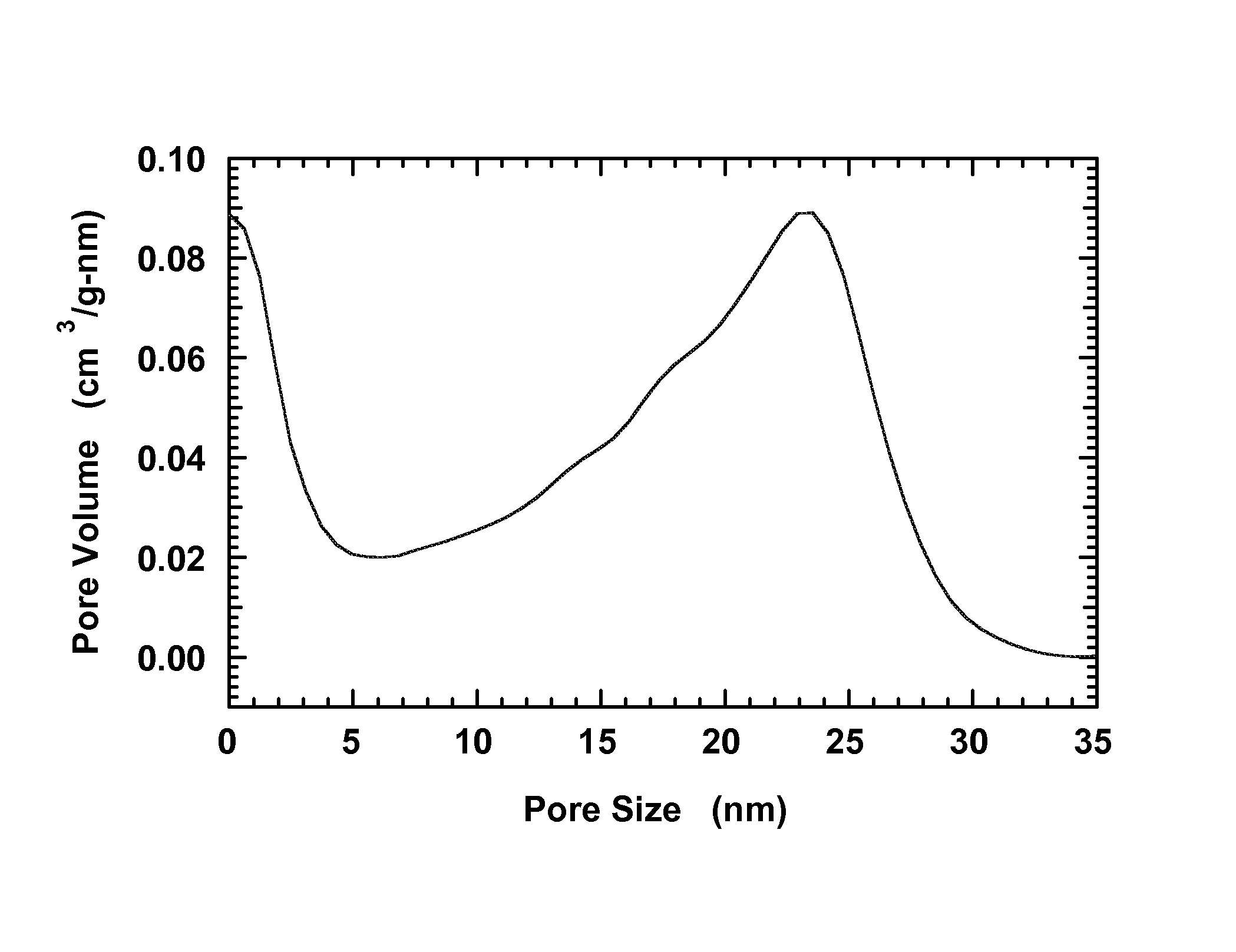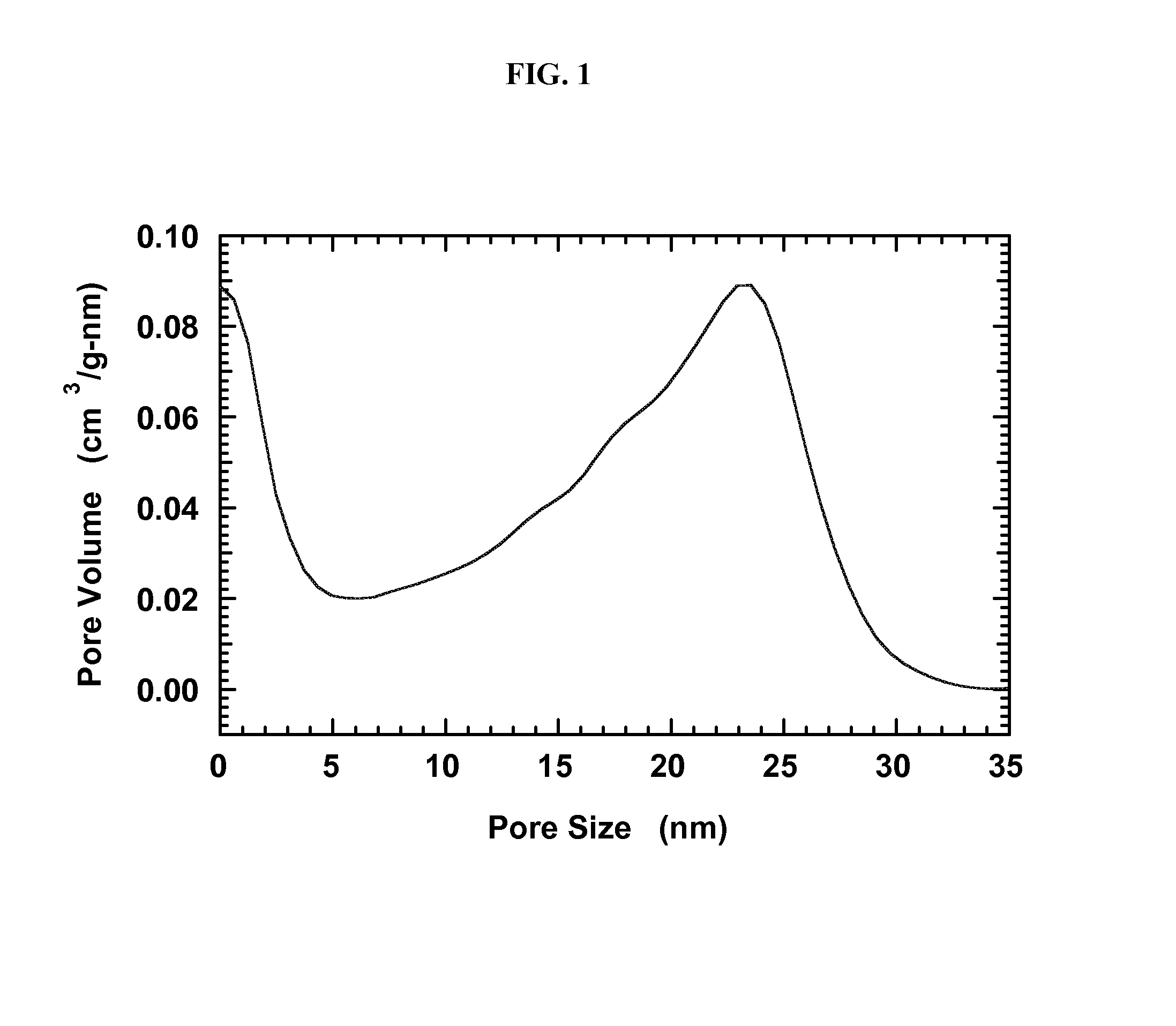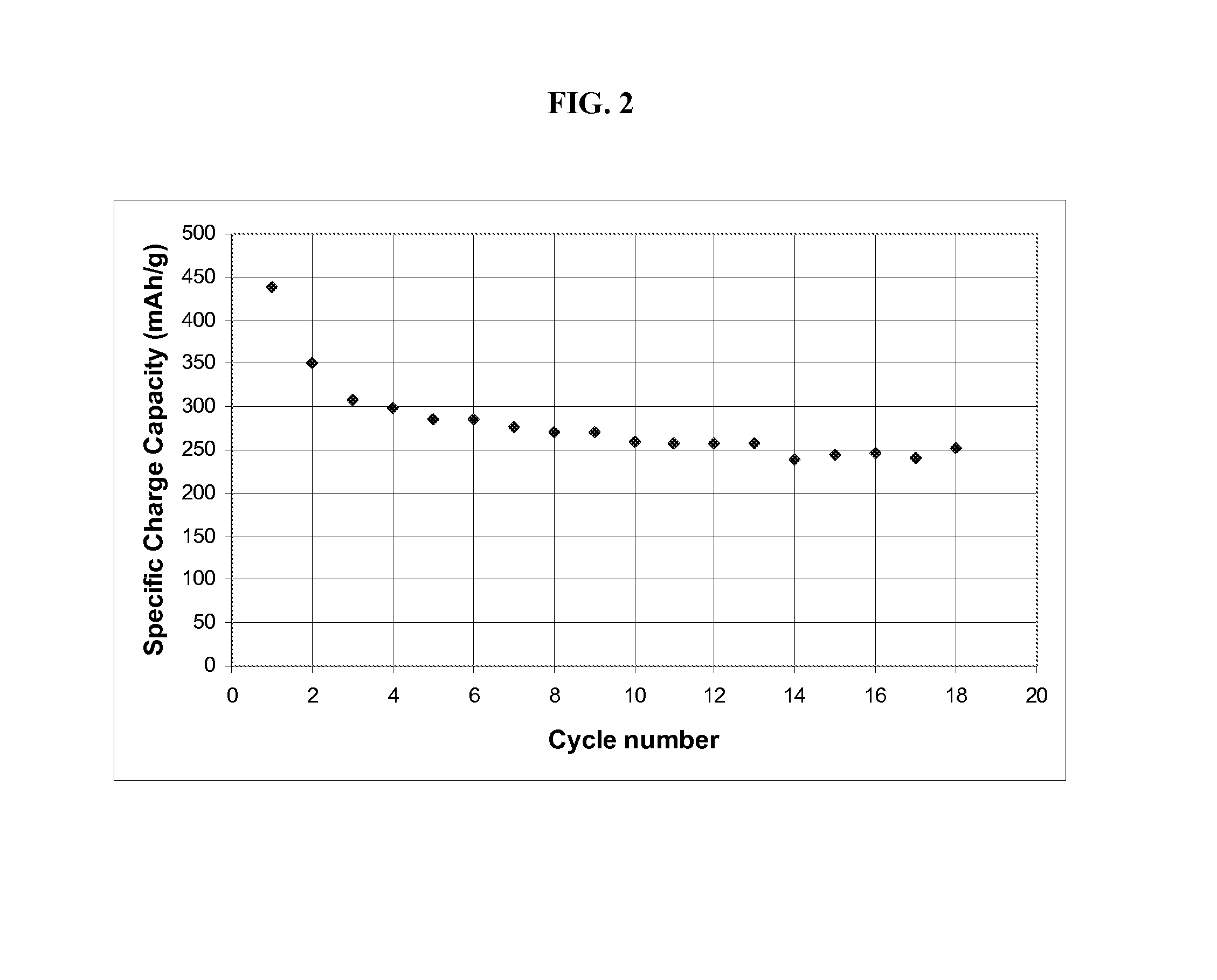Porous conductive scaffolds containing battery materials
a technology of conductive scaffolds and batteries, applied in the field of improved batteries, can solve the problems of multiple challenges of implementation of nanometer-sized battery materials, slow ion diffusion, and lower power output, and achieve the effect of reducing the sintering of oxide materials
- Summary
- Abstract
- Description
- Claims
- Application Information
AI Technical Summary
Benefits of technology
Problems solved by technology
Method used
Image
Examples
example 1
[0055]A carbon aerogel with a peak in the pore-size distribution at 25 nm is produced using resorcinol-formaldehyde condensation as partially described in Li et al., Chem. Mater. 2004, 16, 5676, which is hereby incorporated by reference herein to the extent there is no conflict with this specification.
[0056]First 20.70 g (188 mmol) resorcinol (Aldrich), 30.94 g of 36.5 wt % formaldehyde solution in water (376 mmol formaldehyde, Fluka), and 28.32 g deionized water are mixed until all materials are in solution. Then sodium carbonate (0.040 g, 0.377 mmol) is added and the mixture is stirred until dissolved. The solution is transferred in equal amounts to three 60-mL polypropylene jars, sealed, and aged 24 hrs at 23° C., 24 hrs at 50° C., and then 72 hrs at 90° C. The samples are then cooled, cut into cubes (0.75 cm / side), and immersed in acetone to displace the water. The acetone bath is poured off and refilled twice with at least one hour between cycles. The aerogel cubes are allowed ...
example 2
[0058]Iron oxide-filled aerogels are produced by melting a hydrate of iron nitrate into the carbon aerogel described in Example 1 herein. 1.30 g of carbon aerogel as provided in Example 1 is evacuated and heated to 400° C. under vacuum for one hour to remove residual water from the pores. The flask containing the aerogel is cooled and backfilled with argon. Then 5 g of iron nitrate hydrate, Fe(NO3)3.9H2O, is melted by heating to 60° C. The aerogel is placed in the molten iron nitrate and agitated for 10 min. The aerogel cubes are removed from the iron nitrate nonahydrate and placed in a glass beaker. The cubes are heated in air at 2° C. / min to 150° C., are held at 150° C. for 8 hours, and then are cooled. Next the aerogel cubes are heated under argon at 2° C. / min to 350° C., are held at 350° C. for 3 hours, and then are cooled.
[0059]To measure the iron oxide loading, thermogravimetric analysis (TGA) is performed using a TA 2950 analyzer (TA Instruments). The samples are heated at a ...
example 3
[0062]Cobalt oxide-filled aerogels are produced by melting a hydrate of cobalt nitrate into a carbon aerogel provided in Example 1. 1.26 g of this carbon aerogel is evacuated and heated to 400° C. under vacuum for one hour to remove residual water from the pores. The flask containing the aerogel is cooled and backfilled with argon. Then 5 g of Co(NO3)2.6H2O is melted by heating to 70° C. The aerogel is placed in the molten cobalt nitrate hexahydrate and agitated for 10 min until it has absorbed as much cobalt nitrate hydrate as possible. Then the aerogel cubes are removed from the liquid and placed in a glass beaker. The cubes are heated in air at 2° C. / min to 150° C., are held at 150° C. for 8 hours, and then are cooled. Next the aerogel cubes are heated under argon at 2° C. / min to 350° C., are held at 350° C. for 3 hours, and then are cooled.
[0063]To measure the cobalt oxide loading, TGA is performed using a TA 2950 analyzer (TA Instruments). The samples are heated at a ramp rate ...
PUM
 Login to View More
Login to View More Abstract
Description
Claims
Application Information
 Login to View More
Login to View More - R&D
- Intellectual Property
- Life Sciences
- Materials
- Tech Scout
- Unparalleled Data Quality
- Higher Quality Content
- 60% Fewer Hallucinations
Browse by: Latest US Patents, China's latest patents, Technical Efficacy Thesaurus, Application Domain, Technology Topic, Popular Technical Reports.
© 2025 PatSnap. All rights reserved.Legal|Privacy policy|Modern Slavery Act Transparency Statement|Sitemap|About US| Contact US: help@patsnap.com



